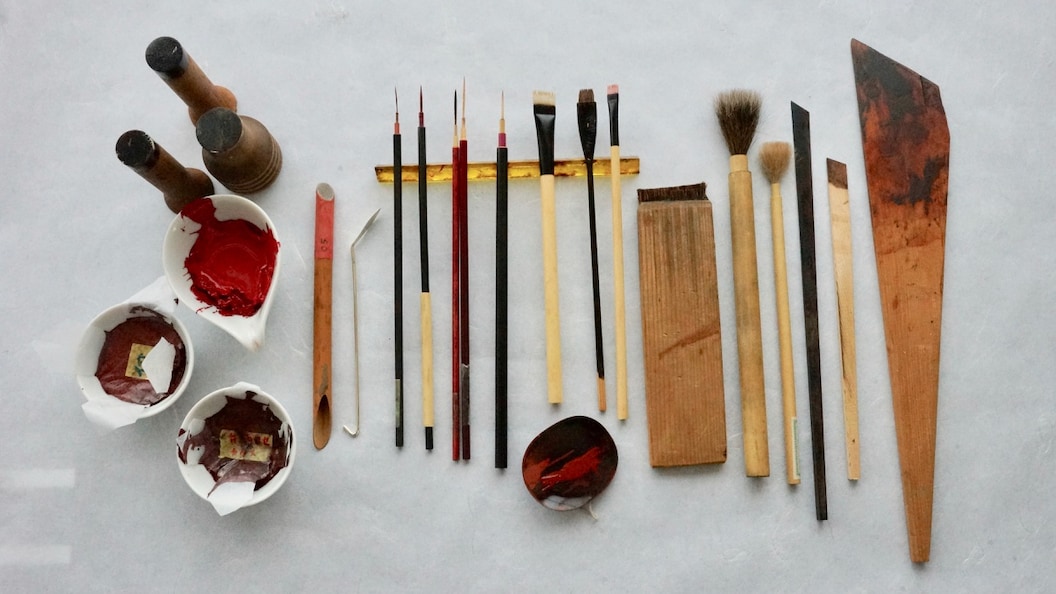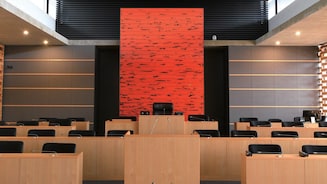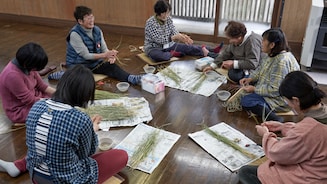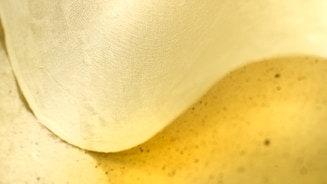A mountainous land dotted with hot springs, Yamanaka in Ishikawa prefecture is a major center of lacquerware production, thanks to woodturners who emigrated to this area four centuries ago. Drawn by the curative waters, perhaps, but also by the dense forests available to them, these woodturners used lathes to cut, sand, face, and otherwise shape wood into bowls and trays that they lacquered themselves.
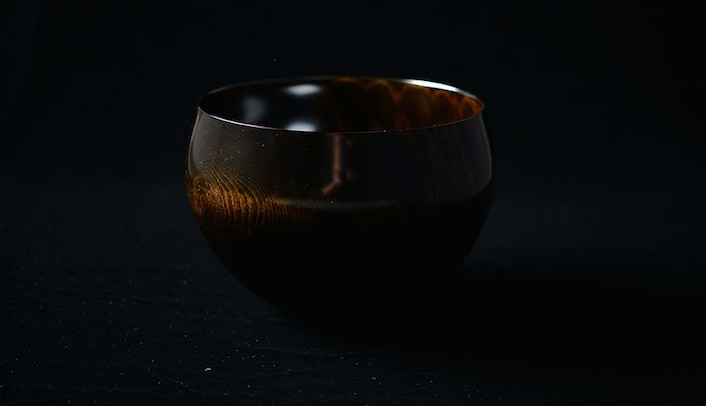
Craftspeople skilled in makie, the art of lacquer painting with gold, silver, and other powders, followed, giving rise to the tradition known as Yamanaka Makie. Today there are some 60 turners in the area maintaining the superb skills of their forebears. Their creativity, and that of the lacquer artists, promises many more prolific chapters in this town’s formidable history of woodcraft.
Turners in Yamanaka typically use wood that is cut crosswise against the grain, which results in suppler, more durable wares. But what, exactly, is the appeal of wooden lacquerware? Some are surprised by the material’s light feel and smooth finish when encountering it for the first time—the combination seems less like high-quality wood and more like plastic. To understand lacquer’s charm, it helps to know where it comes from and how it is obtained.
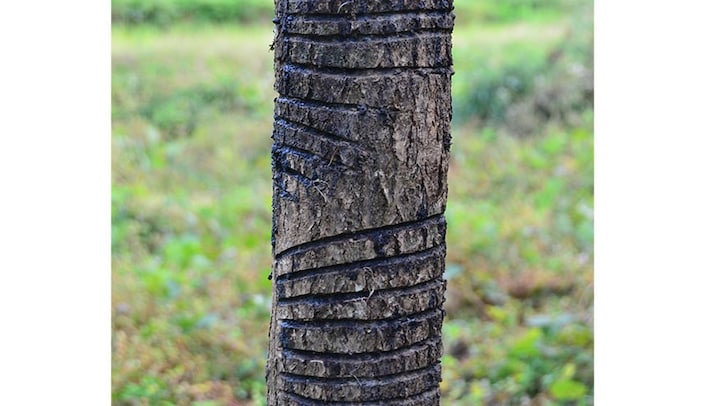
The main raw material is sap collected from trees of the sumac family. The key component of varnish gathered in Japan is urushiol—a high-molecular compound, allergenic oil, and skin irritant. Handling this substance is troublesome enough, but drying it requires oxidized polycondensation—a timely process that demands a steady temperature of 20–25ºC and a humidity factor of 60 to 80 percent. Once it dries, however, natural lacquer is incredibly tough. It is resistant to water, heat, salt, alkali, and acid, and impervious even to nitrohydrochloric acid, a substance that can melt metal. A 2,000-year-old piece submerged in muddy water was found with its shine still in place. What’s more, a lacquer finish is germ-resistant.
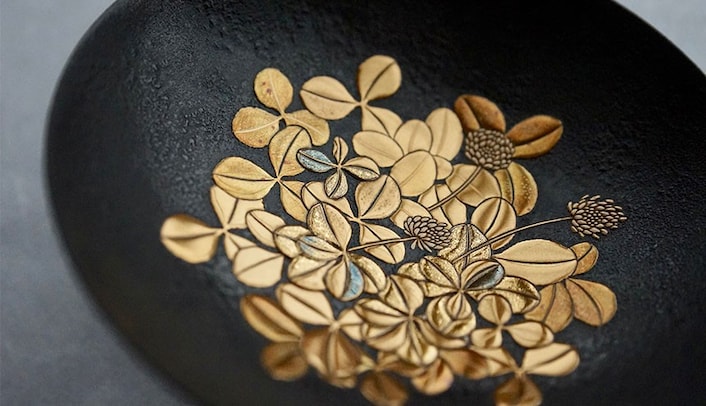
Lacquerware is also ecological. The bark of a varnish tree is cut and its sap collected drop by drop. Using traditional methods, about 200 grams of sap can be recovered from a tree that has been growing for 15 years. In other words, a raw material that will last more than 1,000 years can be recovered in 15.
Aesthetically, lacquer imparts a translucent effect to the surface it coats. When the ancients first found the hardened sap in the forest, their instinct was to use it as an adhesive. It was later adapted as varnish once its beauty and protective properties were discovered. A vermilion-lacquered comb from the prehistoric Jomon era, discovered in Fukui prefecture, has shown that lacquering techniques, as well as our quest for artistic expression, were well in place as early as 6,000 years ago.
Artisans Takehito Nakajima and Mushu Yamazaki, heirs to Yamanaka’s legacy of woodworking and lacquerware, work at the forefront of these crafts today. Nakajima is one of the top woodturners in Japan. He works entirely with tools he has made himself, and does lacquering as well. Yamazaki, meanwhile, paints works that are sought after by collectors the world over.
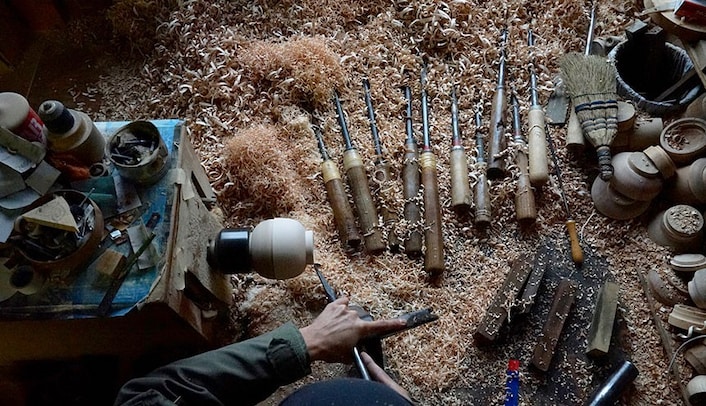
Nakajima’s sake cups in particular are magnificent. As he carefully considers their design right down to the texture and touch of the piece on one’s lips, these works of art are a sublime way to savor Japan’s national drink. His mastery is evident in the feather-lightness of his pieces as well as their ultrathin walls. Recent designs feature translucent lacquer with the gloss of marble, a new form of expression.
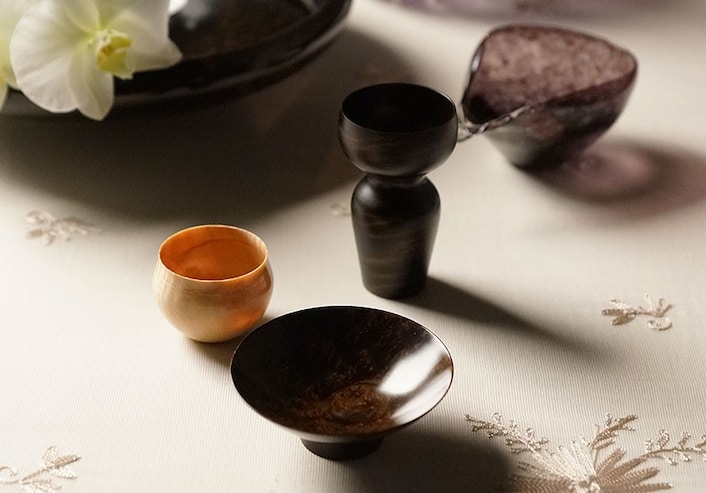
In the decorative art form of makie lacquer painting, designs are built up three-dimensionally and sprinkled with gold or silver powder. Beyond artistic talent, an abiding patience is requisite. As only the slightest bit of lacquer can be applied before it is set to dry and the next coat begun, the process is long and labor-intensive. Besides his trailblazing work in makie Yamazaki takes on restoration projects, too, preserving masterpieces and other antiques in fine form for future generations. His painstaking care, extending even to p
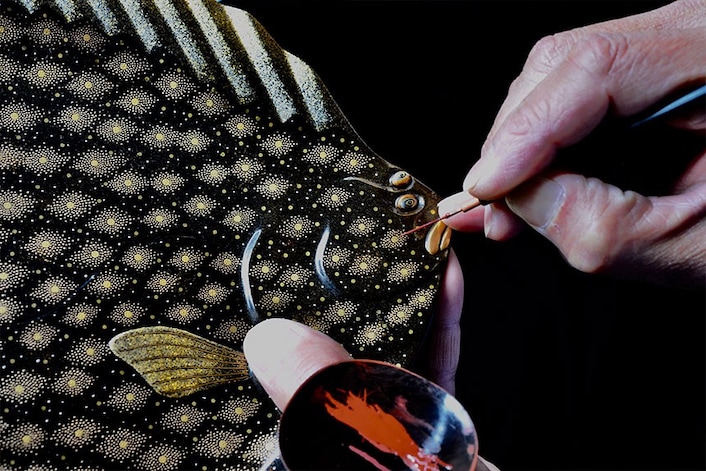
The visitor to Yamanaka will enjoy healing waters that were known to travelers long before the first lodgings were built in the late 12th or early 13th century. Matsuo Basho (1644–1694) later lauded the curative hot springs here in his classic The Narrow Road to the Deep North. And today, as centuries ago, you’ll find the woodturners and makie lacquer artists pursuing perfection.
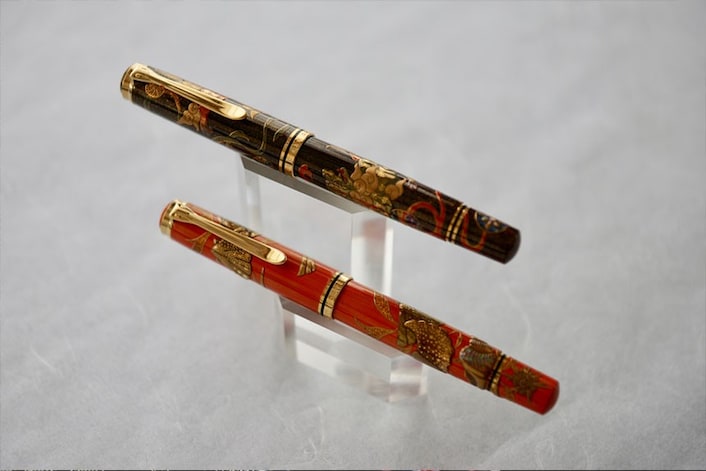
Annual lacquerware fairs are held in Yamanaka for two days each in early May and late September. The latter, in particular, is part of the much larger Koikoi Festival, a highlight of the town’s calendar. For more information on these and other happenings see www.yamanaka-spa.or.jp/event .

